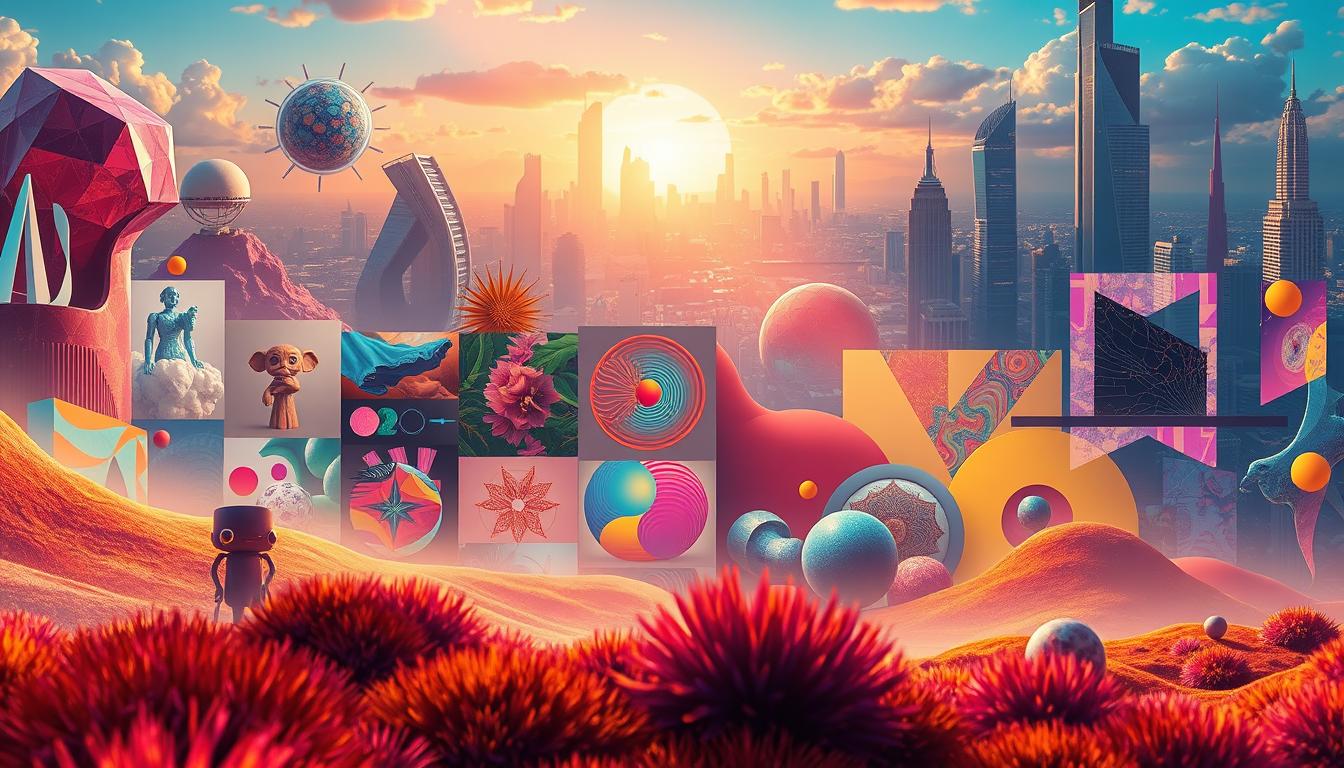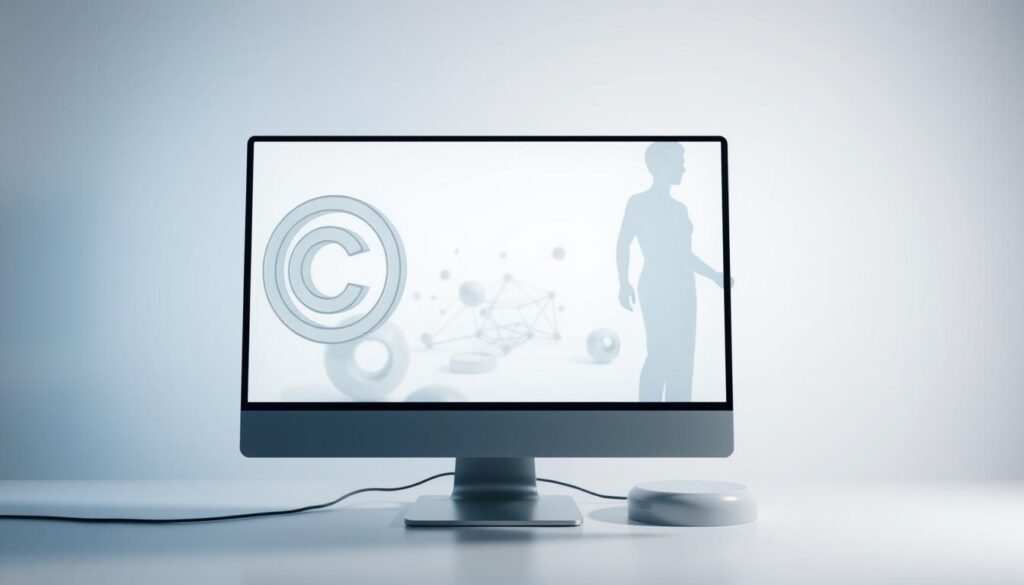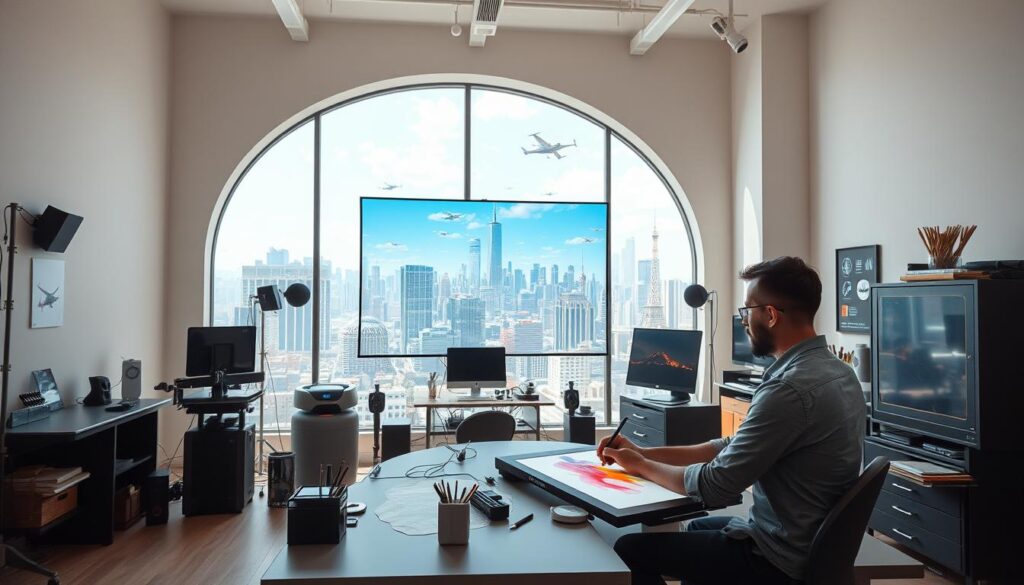Blog
Will AI Kill Creativity? The Great Debate on Generative Art and Copyright

The rise of AI-generated art has sparked a heated debate about the future of creativity. As machines become increasingly capable of producing art, music, and writing that rivals human creativity, many are left wondering: will AI kill creativity or enhance it?
The discussion around AI and creativity is complex, involving artists, technologists, and legal experts. While some see AI as a tool that can augment human creativity, others fear it may replace the need for human artists altogether.
This article delves into the heart of the debate, exploring the implications of AI-generated art on creativity and copyright laws.
Key Takeaways
- The impact of AI on traditional art forms and creative industries.
- The role of AI in augmenting human creativity.
- Legal considerations surrounding AI-generated art and copyright.
- The future of creativity in a world where AI-generated content is increasingly prevalent.
- How different stakeholders view the rise of AI-generated art.
The Evolution of AI in Creative Industries
The integration of AI in creative industries has revolutionized the way art is produced and perceived. This transformation is evident in various aspects of digital art creation.
How AI Has Transformed Digital Art Creation
AI has enabled artists to explore new dimensions of creativity. With tools like Generative Adversarial Networks (GANs) and Neural Style Transfer, artists can now generate complex art pieces that were previously unimaginable. These technologies have not only enhanced the creative process but also opened up new avenues for artistic expression.
Understanding Key AI Art Platforms and Tools
Several AI platforms have emerged as key players in the digital art scene. Some notable examples include:
- DeepDream Generator
- Prisma
- Artbreeder
These platforms offer a range of functionalities, from style transfer to the generation of entirely new art pieces based on user inputs.
Recognizing the Timeline of AI Creative Development
The development of AI in creative industries has been a gradual process. Key milestones include:
- The introduction of early AI art tools in the 2010s
- The development of GANs around 2014
- The recent surge in popularity of AI-generated art
Understanding this timeline is crucial for appreciating the current state of AI in art and anticipating future developments.
How to Identify the Core Issues in the AI Creativity Debate
The intersection of AI and creativity is raising critical questions about the future of art and artists. As we navigate this complex landscape, it’s essential to identify the core issues driving the debate.
Analyzing the Economic Impact on Human Artists
The economic implications of AI-generated art on human artists are multifaceted. While AI can automate certain tasks, potentially reducing costs for businesses, it also poses a risk to the livelihoods of artists whose work is replaced or significantly altered by AI tools.
| Economic Factor | Impact on Human Artists | Potential AI Influence |
|---|---|---|
| Job Market | Reduced demand for human artists | High |
| Art Pricing | Potential decrease due to AI-generated art | Medium |
| Creative Opportunities | New collaborative possibilities between humans and AI | High |
Recognizing Valid Concerns About Creative Displacement
Concerns about creative displacement are valid, given the rapid advancement of AI technologies. Understanding these concerns is crucial to addressing the challenges they pose to human artists.
Key concerns include: the potential loss of creative jobs, the devaluation of human artistry, and the homogenization of art styles due to AI’s reliance on existing datasets.
Distinguishing Between Hype and Genuine Threats
It’s crucial to differentiate between the hype surrounding AI’s capabilities and genuine threats to human artists. Not all AI advancements will directly impact human creativity or employment.
Critical evaluation of AI’s role and its limitations will help in understanding its true impact on the creative industry.
Understanding How Artificial Intelligence (AI) Creates Art
Understanding AI-generated art requires a look into its technical backbone. AI art generation is a complex process that involves multiple stages, from data collection to the final output.
Decoding the Technical Process Behind AI Generation
The technical process begins with machine learning algorithms that analyze vast datasets of existing artworks. These algorithms learn patterns, styles, and techniques, which they then apply to generate new art pieces.
Examining Training Data Sources and Implications
The quality and diversity of the training data significantly impact the generated art. Data sources can range from classical paintings to modern digital art, influencing the style and characteristics of the AI-generated art.
| Data Source | Impact on AI Art |
|---|---|
| Classical Paintings | Influences traditional styles |
| Modern Digital Art | Shapes contemporary and futuristic styles |
Recognizing Current Technical Limitations
Despite advancements, AI art generation faces limitations, including the risk of bias in the training data and the challenge of creating truly original pieces. Understanding these limitations is crucial for appreciating the potential of AI in art.
How to Navigate Copyright Laws for AI-Generated Content
The intersection of AI-generated content and copyright law is a rapidly evolving field that demands attention from artists and legal professionals alike. As AI-generated art becomes more prevalent, understanding how to navigate the complex landscape of copyright laws for AI-generated content is crucial.

Applying Current US Copyright Frameworks to AI Art
Currently, the US copyright framework does not explicitly address AI-generated content. However, the Copyright Office has begun to provide guidance on how AI-generated works can be registered. For instance, in 2023, the Copyright Office issued a ruling that stated works created by AI without human authorship are not eligible for copyright protection.
Learning from Recent Legal Cases and Rulings
Recent legal cases have started to shape our understanding of AI art copyright law. For example, the case involving the AI-generated portrait “Edmond de Belamy” raised questions about authorship and ownership. The ruling in this case highlighted the need for clearer guidelines on AI-generated content.
Preparing for Evolving Legal Standards
As AI technology continues to advance, legal standards surrounding copyright laws for AI-generated content will likely evolve. It is essential for creators and legal professionals to stay informed about these developments to navigate the changing landscape effectively.
By understanding the current legal frameworks, learning from recent cases, and preparing for future changes, artists and creators can better navigate the complex world of AI-generated content and copyright law.
Steps to Distinguish Between AI and Human-Created Art
As AI-generated art becomes increasingly sophisticated, distinguishing it from human-created art has become a pressing concern. The ability to identify the origin of a piece of art is crucial for artists, collectors, and enthusiasts alike.
Identifying Common Visual Patterns in AI Art
One way to distinguish between AI and human-created art is by looking for common visual patterns in AI-generated pieces. AI art often exhibits certain characteristics, such as uniform textures or symmetrical compositions, that can be telltale signs of its artificial origin.
Using Detection Tools Effectively
Several detection tools are available that can help identify AI-generated art. These tools analyze various aspects of the artwork, including its color palette and brush stroke patterns. While not foolproof, these tools can provide valuable insights.
Staying Updated as Technology Advances
The technology behind AI art generation is rapidly evolving. To effectively distinguish between AI and human-created art, it’s essential to stay informed about the latest developments in AI art generation and detection methods.
Practical Ways to Protect Your Creative Work
As generative art ethics come into focus, artists need to be proactive in defending their intellectual property. Protecting creative work in the digital age requires a combination of traditional methods and modern techniques.
Implementing Proper Documentation Methods
Maintaining detailed records of your creative process is crucial. This includes:
- Documenting the development of your artwork from conception to completion
- Keeping records of any AI tools or software used in the creative process
- Noting any significant decisions or changes made during the creation process
Such documentation can be invaluable in establishing the authenticity and originality of your work.
Applying Digital Protection Techniques
In addition to traditional methods, digital protection techniques are essential. Consider:
- Using watermarks or other identifiers to mark your digital artworks
- Employing digital rights management (DRM) tools to control access and usage
- Registering your work with relevant databases or registries to establish a public record
Finding and Using Legal Resources
Understanding your legal rights and options is vital. This involves:
- Consulting with legal professionals specializing in intellectual property and art law
- Staying informed about changes in copyright laws and regulations affecting AI-generated art
- Exploring options for registering your work for copyright protection
By taking these steps, artists can better safeguard their creations in a landscape increasingly influenced by AI.
How to Address Ethical Questions in AI Art Creation
As AI-generated art becomes increasingly prevalent, artists and creators must navigate a complex ethical landscape. The use of AI in art creation raises questions about authorship, originality, and the potential for cultural appropriation. Addressing these ethical concerns is crucial for maintaining integrity in the art world.
Establishing Transparency in Your AI-Assisted Process
Transparency is key when using AI tools in art creation. Artists should clearly disclose the extent to which AI was used in the creative process. This can be done by providing detailed information about the AI tools used, the data they were trained on, and how they contributed to the final artwork.
Developing Fair Attribution Practices
Fair attribution practices are essential in maintaining ethical standards. When AI is used to generate art, it’s important to consider how to attribute the work fairly between human creators and AI systems. This might involve new models of attribution that acknowledge the role of AI in the creative process.
Avoiding Cultural Appropriation Issues
Cultural appropriation is a significant concern in AI art creation, particularly when AI systems are trained on datasets that include cultural artifacts or styles without proper understanding or respect. Artists must be aware of these issues and take steps to avoid appropriating cultural elements inappropriately.
| Ethical Consideration | Best Practice |
|---|---|
| Transparency | Clearly disclose AI use in art creation |
| Attribution | Develop fair attribution models for AI-assisted art |
| Cultural Sensitivity | Avoid cultural appropriation by understanding and respecting cultural elements |
By addressing these ethical questions, artists can ensure that their use of AI in art creation is both innovative and responsible. This involves being transparent about AI use, developing fair attribution practices, and being mindful of cultural appropriation issues.
Guide to Incorporating AI in Your Creative Workflow
By embracing AI, artists can unlock new creative possibilities and streamline their workflow. The key is to understand how to effectively integrate AI tools into your artistic process.
Setting Up Collaborative Human-AI Processes
To work effectively with AI, it’s essential to view it as a collaborative partner rather than a replacement. Start by identifying tasks that AI can perform well, such as generating initial sketches or exploring color palettes, and then integrate these into your workflow.
Defining Personal Ethical Boundaries
As you incorporate AI, consider the ethical implications. Define what you are comfortable with in terms of AI’s role in your creative process. This might involve deciding how much credit to give to AI or how to handle AI-generated content that may closely resemble existing works.

Creating Disclosure Statements for AI-Assisted Work
Transparency is crucial when presenting AI-assisted art. Develop a clear disclosure statement that explains the role of AI in your creative process. This not only helps maintain ethical standards but also builds trust with your audience.
| Best Practices | Description | Benefits |
|---|---|---|
| Collaborative Processes | Integrate AI as a tool in your workflow | Enhanced creativity, efficiency |
| Ethical Boundaries | Define AI’s role and credit | Maintains integrity, trust |
| Disclosure Statements | Clearly state AI’s involvement | Transparency, credibility |
How to Leverage AI to Enhance Human Creativity
By leveraging AI, creatives can unlock new dimensions of imagination and innovation. This synergy between human creativity and artificial intelligence is not about replacement but enhancement.
Using AI for Inspiration Rather Than Replacement
AI can serve as a powerful tool for inspiration, generating ideas that humans can then develop and refine. This collaborative process can lead to novel and groundbreaking artistic expressions. For instance, AI-generated art can provide a starting point for human artists, who can then add their own touch and emotional depth.
Exploring New Artistic Possibilities
AI opens up new artistic possibilities by allowing creatives to experiment with styles, patterns, and techniques that were previously unimaginable or too labor-intensive. This can lead to the discovery of new aesthetics and the evolution of art forms.
Making Creative Tools More Accessible
AI-driven tools are making creative processes more accessible to a wider audience. With intuitive interfaces and automated processes, individuals without extensive training can now engage in creative activities, democratizing art and fostering a more diverse creative community.
As we continue to explore the potential of AI in creativity, it’s essential to consider the ethical implications, such as those related to generative art ethics, ensuring that the use of AI is transparent and fair.
Preparing for Future Developments in AI Art
Preparing for the future of AI art requires a multifaceted approach, including legal awareness, technological savvy, and active participation in policy discussions. As AI-generated art becomes more sophisticated, the legal landscape surrounding it is likely to evolve.
Monitoring Emerging Legal Changes
Staying informed about changes in AI art copyright law is crucial for artists, creators, and developers. Recent court rulings have set important precedents, and ongoing legislative discussions will shape the future of AI-generated content.
Anticipating Technological Advancements
Technological advancements in AI art are happening rapidly. Understanding these developments can help artists and businesses stay ahead of the curve. Some key areas to watch include improvements in image generation, style transfer, and AI-human collaboration tools.
Participating in Policy Discussions
Engaging in policy discussions is vital to ensure that the interests of creators and developers are represented. This can involve participating in public consultations, joining industry associations, or contributing to online forums.
| Key Areas | Current Status | Future Implications |
|---|---|---|
| AI Art Copyright Law | Evolving legal frameworks | Clearer guidelines for creators |
| Technological Advancements | Rapid improvements in AI tools | Increased accessibility and complexity |
| Policy Discussions | Growing involvement of stakeholders | More comprehensive regulations |
By monitoring legal changes, anticipating technological advancements, and participating in policy discussions, we can better prepare for the future of AI art and ensure that its development is beneficial for all stakeholders involved.
Conclusion: Balancing Innovation and Tradition in the AI Era
The debate surrounding AI and creativity is complex, involving various stakeholders and raising important questions about generative art ethics and the future of creative industries.
As AI continues to evolve, it’s clear that it will have a significant impact on the creative landscape. Experts like Prapti Jha and Leslie Grandy suggest that AI can enhance human creativity, rather than replace it, by acting as a thinking partner and augmenting human capability.
The key to navigating this new era is finding a balance between innovation and tradition. By understanding the potential of AI-generated art and addressing the challenges it presents, we can work towards a future where human creativity and AI capabilities complement each other.
As we move forward, it’s essential to continue the conversation around AI and creativity, exploring the opportunities and challenges presented by this emerging technology. By doing so, we can ensure that the benefits of AI are realized while minimizing its negative impacts.
